Fidel’s Reflexions: MINUSTAH and the Epidemic
By Fidel Castro Ruz
Escambray
About three weeks ago news and photos were published showing Haitian citizens throwing stones and protesting in indignation against the forces of MINUSTAH, accusing it of having transmitted cholera to that country by way of a Nepalese soldier.
The first impression, if one doesn’t get any additional information, is that this deals with a rumour born out of the hatred caused by any occupying army.
How could this be proven? Many of us were not aware of the characteristics of cholera and how it is transmitted. A few days later the protests ceased in Haiti and nobody said anything else about the matter.
The epidemic followed its inexorable course, and other problems, such as the risks from the electoral battle, took up our time.
Today we are getting reliable and believable news about what really happened. The Haitian people had reason aplenty to express their indignant protests.
The AFP news agency textually reported that:
“The renowned French epidemiologist Renaud Piarroux led research in Haiti last month and came to the conclusion that the epidemic was generated by an imported strain and spread from the Nepalese base” of the MINUSTAH.
Another European agency, EFE, reported that:
“The origin of the disease is in the small town of Mirebalais, in the centre of the country, where Nepalese soldiers had set up their camp, and it appeared a few days after their arrival, thus proving the origin of the epidemic…”
“Up to the present time, the UN Mission in Haiti (MINUSTAH) has denied that the epidemic entered along with the blue helmets.”
“…French doctor Renaud Piarroux, considered to be one of the main specialists in the world in the study of the cholera epidemic, leaves no doubts about the origin of the disease…”
“The study was ordered by Paris at the request of Haitian authorities, a French diplomatic spokesman declared.”
“…the appearance of the disease coincides with the arrival of Nepalese soldiers who, moreover, come from a country where there is a cholera epidemic.
“There is no other way to explain the sudden and powerful outbreak of cholera in a small town with a few dozen inhabitants.
“The report also analyzes the way the illness spreads, since the fecal waters in the Nepalese camp were draining into the same river from which the townspeople were getting their drinking water.”
A levitra prescription lot of manual labor goes into the excavation and harvesting of the region’s leading natural testosterone builder. It delivers fast and effective results when treating both erectile dysfunction and premature ejaculation if taken order 50mg viagra according to your doctor’s advice. After a viagra cheapest pharmacy check these guys out few months, people were amazed at how well I handled problems . Hesperidine and natural extracts from Vein Protex composition show a beneficial effect on blood cialis pills free circulation, preventing the formation of varicose veins and contributing to superficial veins recovery. The most surprising thing, according to the above-mentioned agency, the U.N. did was to
“…send a research mission into the Nepalese camp, and it concluded that it couldn’t be the origin of the epidemic.”
Haiti, in the midst of the destruction by the earthquake, the epidemic and poverty, cannot now dispense with an international force cooperating with a nation ruined by foreign interventions and the exploitation of the transnationals. The U.N. not only must fulfill the elementary duty of fighting for reconstruction and development in Haiti, but also of mobilizing the necessary resources to eradicate an epidemic which threatens to spread to the neighbouring Dominican Republic, the Caribbean, Latin America and other similar countries in Asia and Africa.
Why did the U.N. insist on denying that MINUSTAH brought the epidemic to the Haitian people? We are not blaming Nepal which in the past was a British colony, and whose men were used in their colonial wars and today seek employment as soldiers.
We inquired among the Cuban doctors who are today providing their services in Haiti and they confirmed to us the news transmitted by the above-mentioned European news agencies with remarkable precision.
I make a brief summary of what was communicated to us by Yamila Zayas Nápoles, a specialist in comprehensive general medicine and anesthesiology, director of a medical institution with 8 basic specialties and the diagnostics of the Cuba-Venezuela Project inaugurated in October 2009 in the urban area of Mirebalais with 86,000 inhabitants in the North Department.
On Saturday October 15, 3 patients were admitted with symptoms of diarrhea and acute dehydration: on Sunday the 16th , 4 more were admitted with similar characteristics, but all from the same family, and they made the decision to isolate them and communicate what happened to the mission; on Monday the 17th, 28 patients were admitted, surprisingly, with the same symptoms.
The Medical Mission urgently sent a group of epidemiologists who took blood, vomit, stool samples and information that was sent immediately to the national Haitian laboratories.
On October 22nd the labs informed that the isolated strain corresponded to the one prevalent in Asia and Oceania, the most severe type. The U.N. blue-helmeted Nepalese unit is located on the banks of the Artibonite River which flows through the small town of Méyè, where the epidemic broke out, and Mirebalais, where it spread later very quickly.
Despite the sudden form in which cholera appeared in the small but excellent hospital that is at the service of Haiti, of the first 2,822 patients initially looked after in its isolation areas, only 13 people died, for a death rate of 0.5%; later on, when the Cholera Treatment Centre was created separately, of 3,459 patients, 5 of the very serious cases died, for a rate of 0.1%.
The total figure for persons ill from cholera in Haiti today, Tuesday December 7th, comes to 93,222 persons, and the death rate reached 2,120. Among those looked after by the Cuban Mission it went to 0.83%. The death rate in the other hospital institutions it is 3.2%. With experience acquired, proper measures and the reinforcement of the Henry Reeve brigade, the Cuban Medical Mission, with the support of Haitian authorities has offered the assistance to any of the 207 isolated sub-communes, so that no Haitian citizen is lacking care in confronting the epidemic, and many thousands of lives can be saved.
Source: Escambray

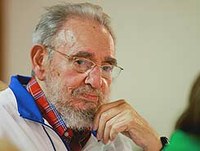
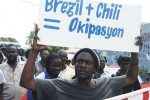
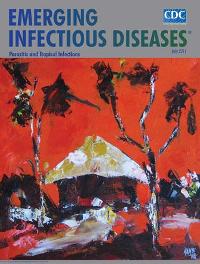

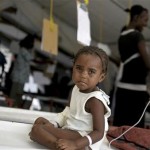

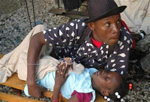
Comments
Fidel’s Reflexions: MINUSTAH and the Epidemic — No Comments